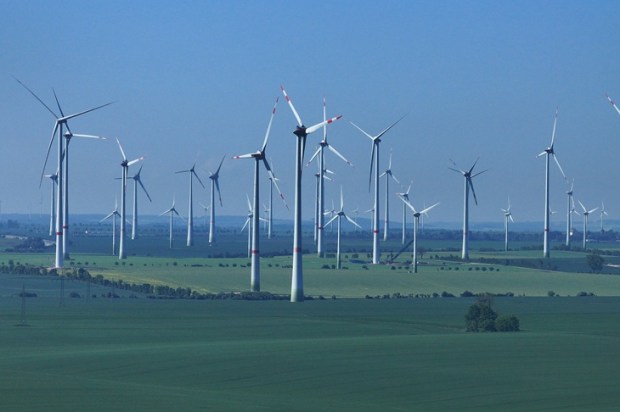150 years ago the Chief Surveyor in South Australia, George Goyder, drew a line across the map to warn prospective farmers that cropping would not be sustainable north of the line due to the risk of droughts.
Following a decade of good rainfall in the 1870s, a wave of wheat farmers crossed the line and established small townships like Farina, 300km north of the line. The farming didn’t last because droughts struck and eventually the town was abandoned. Now all that remains is a row of crumbling facades of buildings in the main street.
‘Wind farming’ is also subject to droughts and someone should have drawn ‘Goyder lines’ in all the places where large-scale wind power was contemplated to show where wind farming is unsustainable due to severe wind droughts. That rules out the whole of Australia, both onshore and offshore, Western Europe, North America, much of Asia, and the subtropical Doldrums.
The elements defeated the wheat farmers at Farina, but modern wind farmers are subsidised and supported by favourable market rules to guarantee a return for their efforts whether the consumers want wind power or not and regardless of the efficiency of the windmills.
In strictly economic terms, they are not a going concern due to their very low Energy Return to Investment. According to some, the EROI for wind is in the vicinity of five compared with coal which is near 30 and nuclear power near 70.
With the wind of subsidies and mandates behind them, towering engines of mass destruction march across the countryside like an invasion of metallic Triffids, killing birds and bats and laying waste to farmlands and forests.
They also poison the sense of community in country towns and districts across the country where friends, family members and neighbours are divided between those who make money by hosting windmills and those who want to save their surroundings. For those who value the quality of country life at its best, this may be the most toxic legacy of the suicidal Net Zero program.
The ruin does not stop in the country. It goes wide and deep as the spiralling cost of electricity wrecks household budgets and threatens to ruin firms that use a lot of power. Think of all the places with stoves and fridges: coffee shops and restaurants, butchers, bakers and candlestick makers, fish, fruit and vegetable shops, and supermarkets. Not to mention heavy industry, steel production, and smelting.
Deindustrialisation is proceeding apace, as it is in Britain and Germany, although it is scandalously not officially documented.
Far from becoming an energy superpower, there will probably be no unsubsidised manufacturing left in Australia at all if the Net Zero program runs much further.
Actually, it can’t go any further. We have hit the wall, as we saw during the recent hot weather, when coal station outages demonstrated the vulnerability of the system since almost 10GW of coal capacity retired over a decade with no replacement.
Solar and wind power cannot replace dispatchable coal power because when there is little or no wind at night, no matter how much solar and wind capacity is built, the output inevitably falls to next to nothing.
There can be no green energy transition because we have run down our coal capacity to the ‘tipping point’ where there is barely enough to carry the base load through the night. Any further reduction in coal power capacity will place us in a ‘red zone’ where blackouts are inevitable on windless nights.
Wind droughts are the fatal flaw in the green fantasy. The meteorologists should have warned us and the policy boffins should have checked the wind and solar supply to identify the worst-case scenario, namely the nights with very low wind across the whole of the NEM.
At least one team found these events over ten years ago in the AEMO records, publicly available for all to see. They were discussed on Jo Nova’s blog, but the word did not travel far enough to make a difference.
Shame on the media commentators and reporters, mainstream and conservative alike, who have not adequately informed the public about wind droughts and their implications.

























